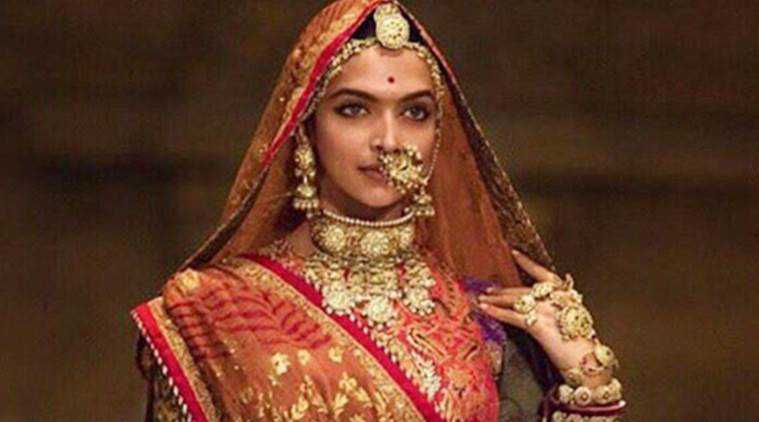Dear SLB, Padmaavat’s visual opulence can’t make up for its sloppy narrative and misplaced glorification
30 January, 2018

Padmaavat was more gorgeous than ever, but was it really worth our money?
With an insipid narrative and relentless exaltation of the Rajputana, the Deepika Padukone, Shahid Kapoor, Ranveer Singh, Aditi Rao Hydari and Jim Sarbh starrer Padmaavat ends up being a tiring affair.
In terms of visual opulence and spectacle, every Sanjay Leela Bhansali film has outdone its predecessor, and Padmaavat was no exception. The scenes were grander, the castles more magnificent and the jewels more radiant. But somewhere amid the whirlwind of palatial grandeur, Bhansali forgot to work on one of the prerequisite of good cinema — a compelling plot line. And that is just the beginning of the long list of things that went wrong with Padmaavat.
If anything, Padmaavat is a singularly exalting love letter written by Sanjay Leela Bhansali to the Rajputs. And look what he got in return? Death threats, bounties on noses and vandalism on his sets. While that is another sad story to dwell upon, let’s talk about what Padmaavat brings to the screens.
When Padmaavat’s (then called Padmavati) first trailer dropped months ago, one thing that had me hooked about this period drama was its novel intention of unfolding some visually perfect and magnificently shot battle scenes. Head full of that, I flocked to a 3D show.
But there is not even one mildly engaging battle scene in the 164 minutes long film.
And if the one where Alauddin Khilji decimates the Mongols comes to your mind, take this. With sharp spearheads, galloping horses and a raging gusto, armies pounce on the battlefield. A swirl of golden sand follows and out of nowhere Ranveer appears with the enemy’s head on his spike. Speaking about the spiked heads, let’s talk about the one that belonged to Raghav Chetan. It is miraculously delivered to Rani Padmavati without even a blotch of blood like a cleanly cut piece of meat served on silverware. And, while we wait along with Khilji in the tents outside Chittor for a full-scale battle, all we get is the tried-and-tested sparring between the leads in the penultimate scene.
Throughout the film, we are left waiting, not just for gruesome action but also for a gripping narrative. Based on the epic poem Padmavat by Malik Muhammad Jayasi, what we have here is a typical love-at-first-sight story between a Rajput king (Shahid Kapoor) and his queen (Deepika Padukone), only disrupted by a barbaric outsider (Ranveer Singh) who falls in love with the fable of her beauty. And in its paean-like attempt to glorify Rajput ‘aan, baan and shaan,’ all Padmaavat becomes is a detailed handbook on how to be a Rajput.
We are reminded of the ‘exemplary’ Rajput ‘usool’ more times than we can count. The Rajput ki talwar, Rajput ka dhar and Rajput ke kangan have been given some insane amount of screen time. While ultimately these famed ‘usool’ only become the excuse Ratan Singh has for every faulty strategy and for every wasted opportunity to kill Khilji.
One, when an unarmed Khilji graces the Chittor Fort, Rajput ‘usool’ say ‘you can’t attack a guest,’ second, when Ratan Singh is singularly face-to-face with a dilapidated Khilji, Rajput usool say ‘you can’t attack a ‘ghayal’ and lastly when Khilji and Ratan Singh are embroiled in their deadly lockdown, Rajput usool say ‘the army stands by the king’s decision,’ even if the other side cheats.
And if that wasn’t enough, in what we can call the film’s keynote address, Padmavati moves a large group of women (including a pregnant mother) to perform ‘jauhar’ for their husbands. And that is exactly the point when Padmaavat moves from a boring yawn-fest to a dodgy cringe-fest of male chauvinism for me. And the problem again lies in the blatant glorification of this horrendous act of ‘jauhar.’ It is almost spelled out loud for the audience with a pitch black theatre screen resonating with the narrator’s voice, “Padmavati ka jauhar, Khilji ki sabse badi haar aur Rajputo ki sabse badi jeet thi.”
Padmaavat lives on the extremes. It presents a world where there is an incessant flattery of Rajputana on one side but on the other, there is an absolute demonisation of the Khiljis who are given to every moral vice that ever existed – gluttony, voluptuousness, greed and ambition.
And while Bhansali does explore a new dimension of suggested homosexuality in Khilji’s relationship with Malik Kafur (Jim Sarbh), we are left wishing that he would have given the same amount of time to the rest of the themes and plot. He even touches upon the motif of mystique with the Rajguru’s act but sadly doesn’t feel the need to build over it. And despite Ranveer delivering a top-notch performance as the epitome of the extremist villainy, Padmaavat always remains in the strictly drawn black and white, never daring to paint the grey.
With an insipid narrative and relentless exaltation of the Rajputana, Padmaavat ends up being a tiring affair.
TAG(s):
